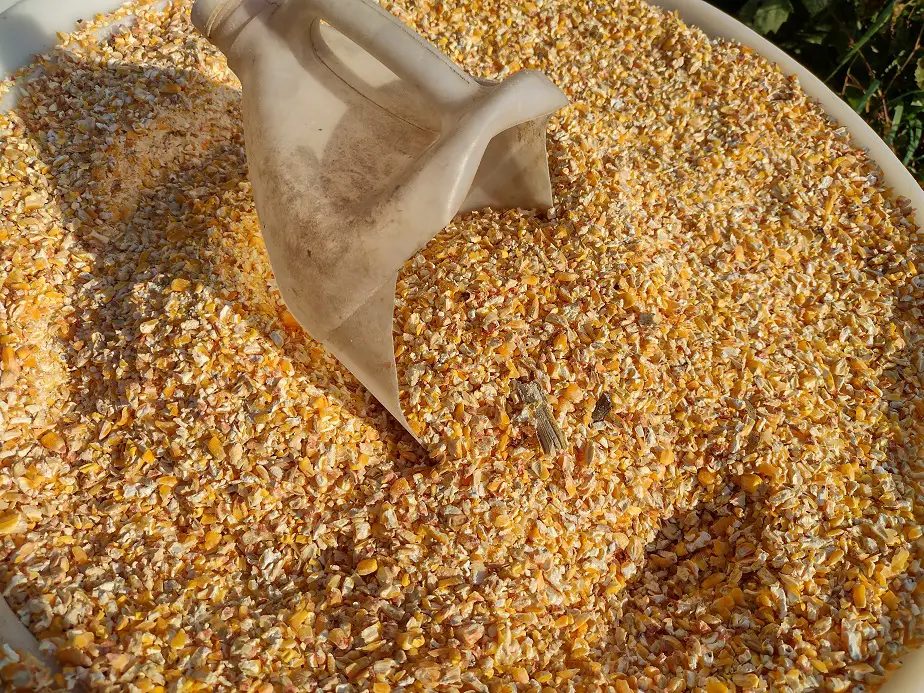One thing I’ve learned about raising pigs is that feeding pigs can be as cheap or expensive as you want.
Pigs can live on just corn, but likely will not grow well or remain healthy. Corn is low in essential amino acids and vitamins for pigs, and only 50-60 percent of the protein in corn is digestible to pigs. Roasting or grinding improves digestion some. Fermented corn will sustain pigs much better than dry corn.
Everybody wants to feed pigs cheap. Corn is often the cheapest feed grain, so let’s talk about it.
Raising Pigs on Just Corn
It’s nothing new to attempt to raise pigs on nothing but corn and water. We’ve been trying things like that since pigs were first domesticated who knows when. I haven’t personally done it, but have been tempted when times were tough and corn was cheap. I do know a few who did just that.
Feeding pigs just dry corn tends to result in poor muscle gains, excess fat gains, and overall poor physical condition of the pig. Oftentimes when I find an obese homestead pig, it has been fed mostly corn. Corn is a high-starch food is quite high-calorie compared to mother grains.
Modern feed corn has been bred to be very high in soft starch with low levels of hard starch to make it an easily digestible energy concentrate. Modern field corn is quite low in amino acids and vitamins, but high in energy. Pigs that don’t get enough amino acids can’t properly build muscle tissue and become stunted.
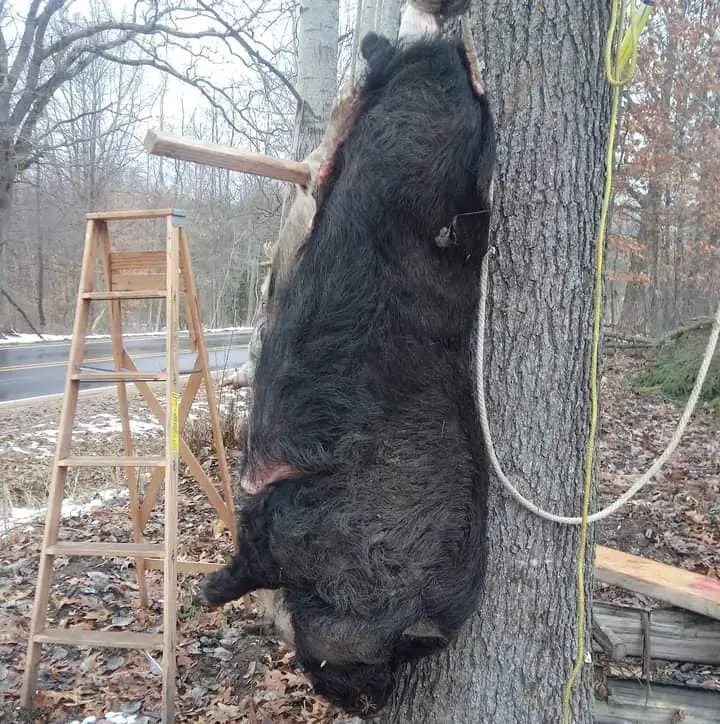
What Proteins do Pigs need?
The proteins pigs need are:
- Arginine
- Histidine
- Isoleucine
- Leucine
- Lysine
- Methionine
- Phenylolanine
- Threonine
- Tryptophan
- Valine
Unfortunately, basic corn is lacking in several of those, including three of the most important ones, lysine, methionine, and tryptophan. The main type of protein in corn is called prolamins or zeins. Prolamins are basically devoid of lysine and tryptophan. Corn doesn’t have what pigs need. There is a fix for that.
When corn is fermented, the lysine can more than double the lysine, and increase the overall available amino acids by nearly 50 percent, as well as adding vitamins that weren’t present before. Sounds amazing, doesn’t it? Fermenting corn is something I’ve put a lot of time and research into learning.
Pigs need all the basic vitamins, A, B, C, D, E, and K, plus enough minerals and amino acids. A pig’s dietary needs are quite similar to that of humans.
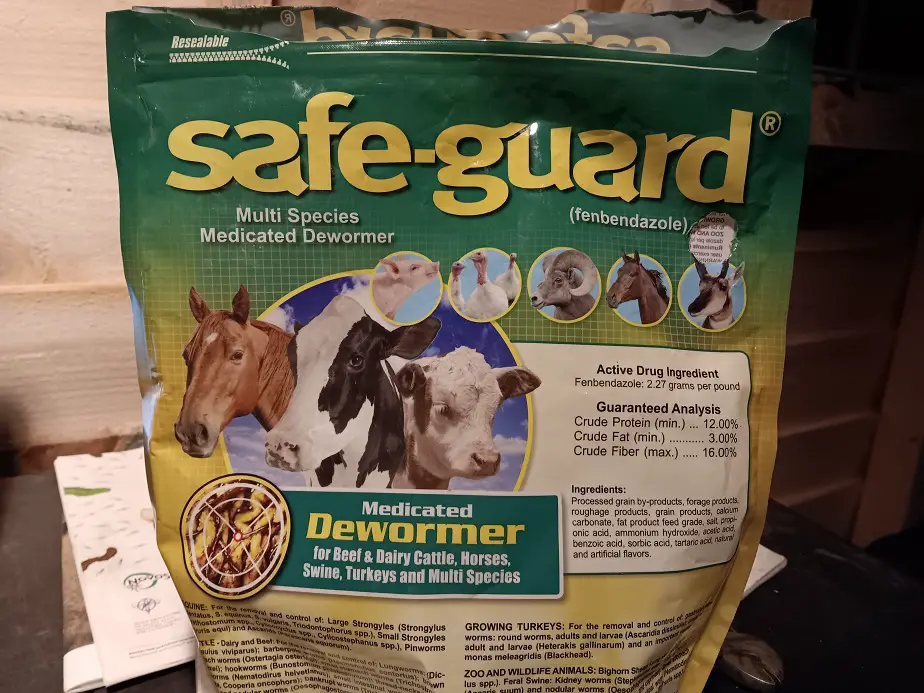
One thing you need for pigs, no matter your raising system, is a parasitic worm treatment. The best swine dewormer is Fenbendazole. It’s known by the brand name Safeguard. Safeguard is available as a medicated corn/alfalfa pellet. It’s the only way I can worm my pigs since they won’t stand still for an injection of Ivermectin. It’s easy and cheap.
- There is a stronger pellet for swine only. Here it is on Amazon
- There is a weaker pellet for general barnyard livestock, including swine. Here it is on Amazon.
I use the multi-species version because it’s what’s available in my local store and I can use it for my chickens too. It’s the most effective swine wormer and the easiest to administer. I use it on all weaned piglets and adults twice a year. Don’t go without it.
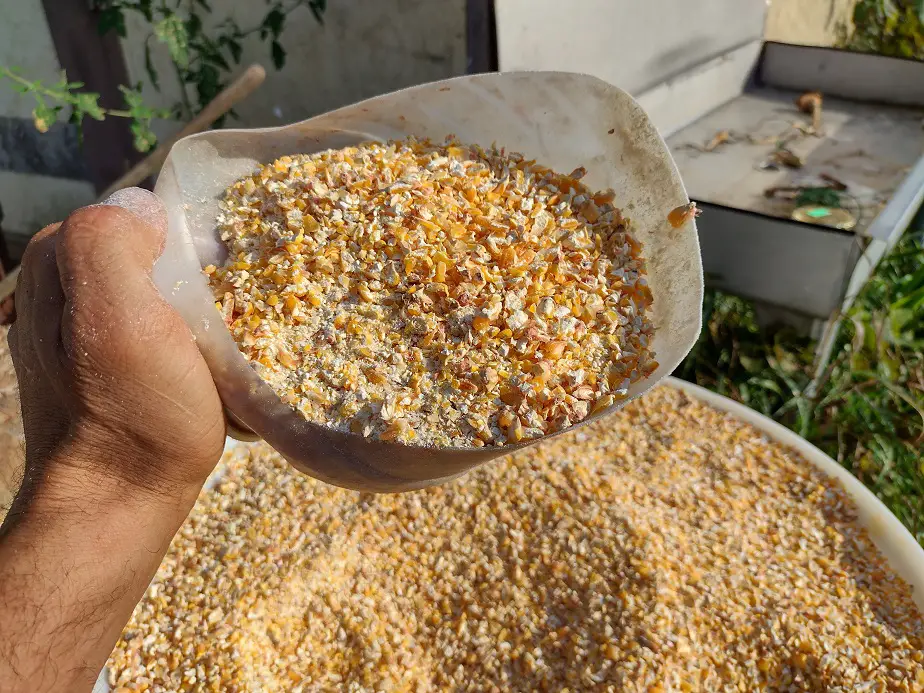
How to Make Corn a Decent Pig Feed
Fermenting corn is the only way to get pigs to fully digest corn. Plus, it makes it a higher-protein feed. The microorganisms, mainly bacteria and natural yeast, consume some of the starch, which makes carbonic acid.
That concoction all works together to break down the hull of corn kernels and the formerly undigestable chain proteins found in corn. As the yeast and good bacteria multiply, they themselves become a source of well-rounded protein. It may sound weird, but that’s exactly what happens in normal digestion.
Only, here we are jumpstarting the process to add more protein than happens naturally in a pig’s intestines. It is a healthy, safe practice that is well known to improve the nutrition and digestibility of grains for single-stomached animals.
Standard feed corn is 6-8 percent protein. Fermented corn clocks in at about 10-12 percent protein and with a nice even protein profile containing all the needed amino acids. That’s still low-protein for a pig, 14-1 is The concern now becomes mainly that of getting enough vitamins. I do that by giving my pigs kitchen scraps and fresh wild greens.
I wrote an article on fermenting grains for pigs. Here’s a link to it.
Old-timers used to often feed pigs little more than fermented, or soured, corn and kitchen scraps. It worked. I talked to one older man who remembered as a boy in Oklahoma raising two or three hogs a year on not much more than soured corn.
I remember reading a bulletin about raising pigs in the 1940s (during World War 2) that said table scraps from two families and 100 pounds of corn were enough to raise a hog. That’d not be a well-fed fat hog, but it’s still meat. In commercial hog feed, corn is 60-80 percent of the mix.
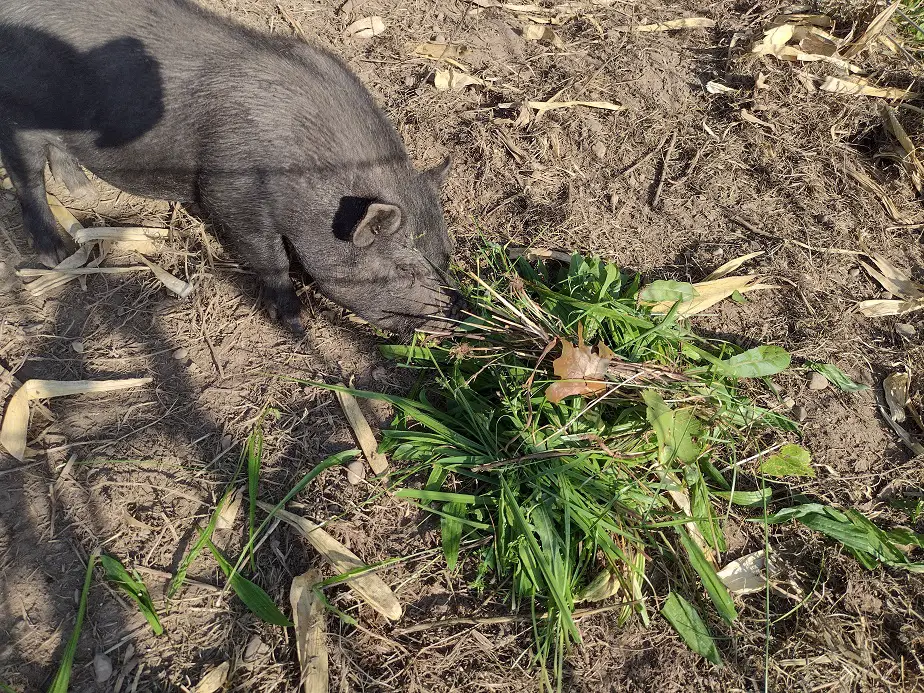
My pigs get a nice salad of fresh greens every day, and hay in the winter. It also helps to raise pigs in the sunshine so they can naturally synthesize vitamin D.
You can raise decent hogs on fermented corn if raised outdoors, given table scraps, and offered assorted fresh grasses, weeds, and/or tree leaves.
Currently, my pigs are fed a fermented 50/50 mix of corn/oats, and whatever vegetation I can scavenge. They are growing well and should reach the expected butcher weight this fall.
Let me re-cap here with some main points.
- Dry corn is nutritionally lacking for pigs.
- Whole corn doesn’t digest as well as cracked corn. Ground corn is better yet.
- Well-fermented corn has functional but low protein levels and a decent mix of amino acids.
- Pigs should get free air and sunshine, and be as clean as possible.
Related Articles

